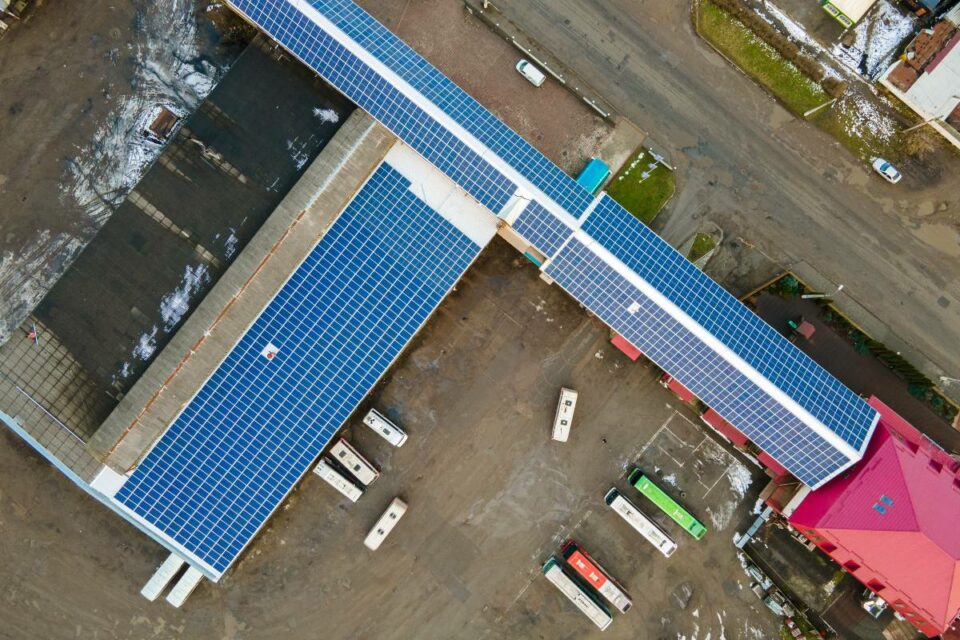The modern economy is heavily reliant on industrial and commercial real estate, which plays a key role in hosting businesses such as warehouses, factories, and retail outlets. However, with the emergence of e-commerce, the traditional market has been disrupted; forcing companies to rethink their investments in these properties amid changing demands. Despite presenting difficulties for existing players there are also positive indications that this development will enable more efficient business models while increasing demand worldwide – revealing just how much influence e-commerce can have on industrial commercial real estate activities going forward.
According to a recent CBRE Research research, for every additional $1 billion in e-commerce sales growth, an additional 1.25 million square feet of distribution space is required to sustain channel expansion.
Key Takeaways
- E-commerce has had a major impact on the way commercial and industrial real estate is used.
- By better understanding how e-commerce is changing the industry, businesses can make informed decisions on where to invest to maximize their ROI.
- On a macro level, increased demand for distribution space due to e-commerce growth means that there will be a greater need for new warehouses and office spaces.

E-commerce and its growth in recent years
E-commerce has revolutionized the shopping experience, bringing together a global marketplace and customer base that can purchase products or services with just a few clicks. From purchasing clothes in retail stores to banking transactions, delivery of goods, and secure payment processing – all made possible through electronic networks such as the Internet. This streamlined system allows customers from anywhere around the world to quickly access an abundance of goods at their convenience.
Thus, e-commerce booms during the pandemic since people are not allowed to shop in a physical store. In fact, according to Forbes, its sales grew 50% to $870 billion in the said time, having a 14.2% increase in 2020. The global e-commerce industry is expected to grow from $870 billion in 2021 to $6.51 trillion in 2023 as a result of increased demand for goods and services in emerging markets such as India and Latin America.
The Impact of E-commerce on Industrial Real Estate
Increase in demand for warehouses and distribution centers
The impact of e-commerce on industrial real estate is significant, and it’s only going to get bigger.
Warehouses and distribution centers are in high demand right now, and that’s because of the increased demand for products that can be shipped quickly and easily. E-commerce has made it easier than ever for people to buy things online, and that means more products are being sold than ever before.
The growth in e-commerce has been so significant that it’s even changing how we think about warehouses: rather than having one warehouse where you store all your inventory, it makes more sense to have many warehouses spread out across the country or even around the world. This is because having warehouses spread over many locations will allow the companies to deliver the products to the consumers at a faster rate. That’s why new warehouses are becoming bigger and wider in the present time just like in the US.
Change in warehouse design and layout to accommodate e-commerce operations
Warehouse design and layout have changed dramatically to accommodate the needs of e-commerce operations. These changes include:
- The use of high-tech automation systems reduces labor costs while increasing productivity.
- The use of robotics to automate processes such as picking items from shelves or sorting them into boxes for shipping.
- The adoption of open floor plans allows for easier movement throughout the warehouse so employees can get their jobs done more quickly and efficiently.
Distribution centers have also undergone significant changes as a result of e-commerce growth–most notably in terms of size. For instance, today’s distribution centers are much larger than they were even ten years ago because they must be able to handle high volumes without creating bottlenecks that slow down delivery times or cause products to arrive damaged due to improper handling during transit.
Impact on location and accessibility of industrial properties
Industrial properties are often located far away from major cities, making them difficult for many people to get to. But as more people shop online and don’t need to go into town often (or at all), this is changing how they view industrial property locations. They want something closer so they can get there easily with their deliveries or shipments.
If you want to know 9 Reasons Why the Industrial Real Estate Outlook is Great, then read on here. This blog is going to help you understand why industrial real estate is such a great investment.
The Impact of E-commerce on Commercial Real Estate
The shift in retail strategies and decline in brick-and-mortar sales store closures.
The retail industry is undergoing a rapid transformation. Consumers are increasingly buying online, and online retailers are responding by opening new e-commerce websites and investing in digital platforms. This shift has been driven by the growth of online shopping, which now accounts for over 12.1% within the year 2020 to 2021 of total retail sales globally. As a result, there has been a significant decrease in the number of traditional retail locations over the last few years.
This industry is undergoing a dramatic transformation as companies strive to maximize profits and customer satisfaction. To achieve these goals, businesses are transitioning away from traditional brick-and-mortar stores towards warehouse distribution centers where they can better control inventory levels and shipping routes across various outlets.
Increase in demand for smaller retail spaces and pop-up shops
Pop-up shops are a great way for brands to trial new ideas and product lines, or small businesses that don’t have the resources to open up permanent stores. These short-term experiments provide an opportunity to innovate in a risk-free environment, allowing companies of all sizes to explore fresh concepts without investing heavily in long-term retail spaces.
The convenience of shopping from home or the office has ushered in an era where pop-ups have become a sought-after part of the retail landscape. As e-commerce continues to grow, so too do opportunities for smaller and more accessible commercial real estate outlets – making it easier than ever before to set up shop online or even create brand new stores without any prior knowledge.
Impact on office space and the rise of co-working spaces
The impact of e-commerce on commercial real estate is evident in the development of co-working spaces, which provide an alternative to traditional office space by providing more flexibility and lower transportation costs (and costs overall).
As companies become ever more global and mobile, there is a rising demand for co-working spaces that can provide cost savings by allowing businesses to share resources. Such shared spaces are also desirable because they offer features usually restricted to expensive office leases – such as flexible work environments, on-the-spot access to technology and supplies, plus food & beverage options throughout the day.
How E-commerce Impacts Commercial Real Estate FAQs
Why is e-commerce considered important in the commercial sector?
E-commerce is an important part of the commercial sector because it provides a more efficient way of doing business. It is a common practice to use e-commerce in the commercial sector. The main reason for this is that it helps to cut down on costs, which will ultimately help businesses save money. This allows businesses to do online sales, which makes it very convenient for the clientele and also allows them to save time and energy. The best thing about e-commerce is that it makes things easier, faster, and more convenient than ever before.
What are the benefits and impacts of e-commerce?
The benefits of e-commerce are numerous and broad, but they all revolve around the idea that e-commerce companies can make transactions simpler and more efficient.
The most obvious benefit is the ability to sell a product or service at a lower operational cost than traditional methods. E-commerce companies can take advantage of economies of scale to keep costs low. They also have access to new technologies and processes that allow them to automate certain tasks.
E-commerce companies enjoy the advantage of being able to connect with customers who might otherwise be unreachable. Not only that, but e-commerce businesses can provide enhanced customer service by way of email, phone calls, and social media – giving shoppers a feeling as if they’re part of something bigger thus building strong relationships between them and the company’s personnel.
What is the positive impact of e-commerce on society?
E-commerce has revolutionized the way we shop, providing customers with unparalleled convenience and access to a global marketplace. It has also created an enormous job market dedicated to supporting this new form of digital commerce – from software developers to customer service professionals. Moreover, by making it easier for small businesses to reach more customers online, e-commerce is helping entrepreneurs around the world realize their dreams!
How does e-commerce affect business and the economy?
E-commerce has changed the way businesses do business. It has enabled companies to grow and expand their reach across the world, while at the same time reducing costs. As a result, companies are now able to get products to customers faster and cheaper than ever before.
This is also helping to improve the economy. As more consumers buy online, they’re spending money in local stores and restaurants, which creates jobs around the country. It’s also creating new jobs in e-commerce itself, as well as in areas like logistics and supply chain management. Aside from that, e-commerce highly promotes exports and production which also benefits the economy.
What economic characteristics most impact the value of the commercial property?
A Commercial real estate company (or commercial real estate itself) is a valuable asset for many reasons, but one of the most important is that it helps businesses make money. The value of commerce commercial real estate depends on many factors, including location, size, renovation, aesthetics, supply and demand, interest rates, etc. And as a result, there are many different types of commercial properties available in any given area. However, certain characteristics tend to increase the value of your commercial property more than others do.
Conclusion
It has become clear that e-commerce has had a significant impact on industrial and commerce real estate in recent years. The demand for warehouses and distribution centers has increased as consumers are ordering more online than ever before, adding new pressures to the current markets. With a prominent shift in retail strategies, there has been an accompanying decrease in brick-and-mortar store closure rates.
On the other hand, the rise of co-working spaces and shared workspaces point to a new future for office space development and occupancy. As e-commerce continues to shape the commercial landscape and industrial properties, players in these industries must be prepared to adapt to creative solutions.
This could include developing innovative strategies to capitalize on market opportunities or leveraging technology to optimize services. By evaluating current trends and understanding consumer behavior changes, industry leaders can be well-positioned for whatever may come next.




